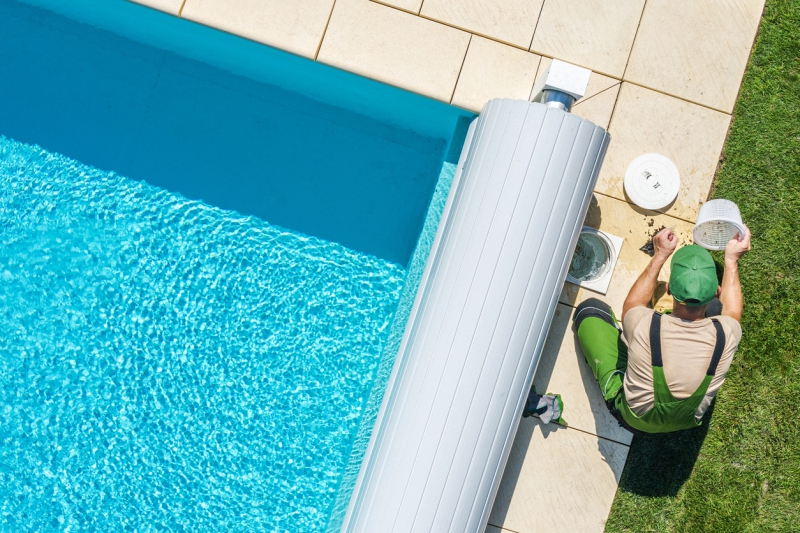Keeping Your Pool in Perfect Balance: A Practical Guide to Pool Maintenance

Owning a pool should be a joy, not a chore. While it might seem like there's always something to clean or fix, establishing a consistent maintenance routine simplifies the process. A well-maintained pool remains a refreshing escape, stays free of costly issues, and ensures a safe swimming environment. This guide walks you through daily, weekly, and monthly tasks, while also explaining why the order of chemical adjustments matters.
Why a Routine Matters
One of the biggest mistakes pool owners make is waiting until a problem arises-like green water or burning eyes-before taking action. A small amount of regular upkeep prevents big, expensive problems from developing. Think of your pool as an ecosystem that thrives on balance-spot-checking chemistry, skimming debris, and routine equipment checks all work together to keep the water clear and swimmers happy.
Daily Essentials
Skim the Surface
Floating leaves, insects, and pollen not only make the water look unappealing, but they can clog the skimmer and overwork your pump. A quick skim each day keeps the water clear and reduces strain on the filtration system.
Visual Inspection
Take a quick look at water clarity and listen to your pump. Unusual noises or cloudiness could signal developing issues you can catch early.
Weekly Commitments
Brush and Vacuum
Brush pool walls and floors to dislodge dirt or algae that love to cling to surfaces. Follow up with a manual or automatic vacuum to remove debris from the bottom.
Test and Balance Water Chemistry
Your pH, alkalinity, and sanitizer levels can shift quickly due to weather, usage, and evaporation. A weekly test ensures chemical balance and prevents major corrections.
Filter Care
If you have a sand or DE filter, backwash according to the manufacturer's recommendations. For cartridge filters, rinse thoroughly if they appear dirty.
Monthly Deep Dives
Equipment Inspection
Check for leaks around the pump, heater, or filter connections. Ensure the pressure gauge on your filter is functioning correctly.
Calcium Hardness and Stabilizer Levels
While calcium hardness and cyanuric acid (stabilizer) don't fluctuate as often, they can drift out of range over time. Monthly testing keeps them within proper limits.
Salt Cell Cleaning (If Applicable)
Saltwater systems require periodic cleaning to prevent calcium buildup on the salt cell. A mild acid soak removes scale and keeps it functioning efficiently.
Seasonal Checkpoints
Opening and Closing
In climates with harsh winters, properly opening and closing your pool (see our seasonal maintenance guides) ensures a smooth transition between seasons.
Heater Tune-Ups
If you use a pool heater, scheduling a professional inspection every 1-2 years can extend its lifespan and improve energy efficiency.
Why the Order of Chemical Adjustments Matters
Adding pool chemicals in the correct sequence prevents wasted product, poor results, and imbalanced water. Following this structured approach ensures a stable, healthy pool.
Step 1: Adjust Total Alkalinity (TA)
Total alkalinity stabilizes pH. Keep it within 80-120 ppm.
- To raise TA, add sodium bicarbonate (baking soda).
- To lower TA, use muriatic acid or sodium bisulfate.
Step 2: Dial in the pH
Once TA is set, adjust pH to 7.4-7.6.
- To increase pH, add soda ash or washing soda to raise it.
- To decease pH, dd muriatic acid or dry acid to lower it.
Step 3: Sanitize
With the pH balanced, your sanitizer works effectively. Maintain chlorine at 1-3 ppm or bromine at 3-5 ppm.
Step 4: Manage Calcium Hardness & Stabilizer
Keep calcium hardness at 200-400 ppm (depending on your pool's surface). If your pool is outdoors, cyanuric acid (CYA) should be 30-50 ppm to protect chlorine from sunlight.
Testing and Monitoring
To maintain these levels:
- Test weekly for routine adjustments.
- Check daily during extreme heat or heavy pool usage.
- Use liquid test kits for precision or test strips for quick checks.
- Digital testers offer lab-like accuracy if you're willing to invest.
A well-maintained pool is the heart of any backyard oasis. By following a structured routine-daily skimming, weekly checks, and monthly deep dives-you'll prevent major issues and keep your pool clean, safe, and inviting. Consistent maintenance saves time and money, letting you spend more time swimming and less time troubleshooting.
